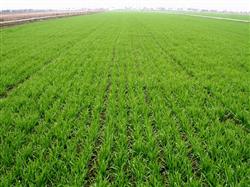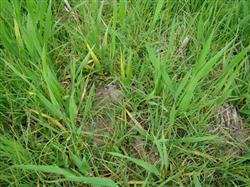Disease and pest control of wheat

Wheat spiders [distribution and damage] there are two main species of wheat spiders, the wheat round spider [Penthaleusmajor (duges)] and the wheat long-legged spider [Petrobialatens (Mullen)]. The former belongs to the family Acaridae, the latter belongs to the family Tetranychidae. It is distributed in all wheat areas all over the country, mainly wheat long-legged spiders in the north and wheat round spiders in the south. Wheat spiders think that wheat is mainly harmful, followed by barley, peas, alfalfa, thorns and other weeds, mainly distributed in wheat fields with low-lying terrain, high groundwater level, heavy soil viscosity and overdense plants. Wheat long-legged spiders mainly occur in dry wheat fields, harming not only wheat and barley, but also cotton, soybeans and other crops. [morphological characteristics] the spider body of Maiyuan is oval, 0.65 to 0.98 mm long, with red spots on the back, 4 pairs of feet, the first pair is the longest, the fourth pair is the second, and the second and third pairs are equal. The spiders of wheat long legs are spindle-shaped, 0.5 mm long, red in the center of the back, dark brown on both sides, 4 pairs of feet, the first pair of feet is more than the second pair, and the third pair is 2 times longer. [occurrence regularity] the spider spiders have 2-3 generations a year, overwintering with adults and eggs on wheat plants and weeds, causing serious damage from mid-late March to early April. Oversummer eggs are harmful to autumn seedlings in October and like to be moist, mostly before 8 ~ 9 o'clock in the morning and after 4 ~ 5 o'clock in the afternoon. Wheat long-legged spiders have 3-4 generations a year, overwintering with adults and eggs, and enter the peak period from April to May. The oversummer eggs in the first and middle of October harm the autumn seedlings, like drought and daytime activities, and are at their peak at 3: 4 p.m., when there is heavy rain or dew. that is, the latent wheat bushes or soil cracks do not move. [control methods] 1. Agricultural measures such as crop rotation, reasonable irrigation and shallow tillage after wheat harvest were adopted to reduce the source of insects. 2. One is to mix seeds with 75% 3911 EC 100g 200ml, 5kg of water, and spray 50kg of wheat seeds; the other is to apply in the field with 40% dimethoate emulsion 2000 times, or 40% triclofenac EC 1500 times, or 50% malathion EC 2000 times spray. Wheat aphids [distribution and damage] the main species of wheat aphids are Macrosiphumavenae (fabricius), Schizaphisgraminum (Rondani) and Rhopalosiphumpadi (Linnaeus), all of which belong to the family Homoptera. It occurs in all the wheat regions of the country. It mainly harms wheat and other gramineous crops and weeds. Nymphs and adults often clustered in leaves, stems and ears to absorb juice, and the injured site initially showed small yellow spots, followed by stripes, withered and the whole plant withered to death. [morphological characteristics] the antennae of wheat aphid are shorter than body length, the abdominal canal is longer than the ventral end, the frontal tumor is obvious, and the midvein of winged forewing is 2-forked. The antennae of the aphid is longer than the body length, the abdominal canal is longer than the ventral end, the frontal tumor is obvious, and the midvein of the winged forewing is 3-forked. The antennae of Rhopalosiphum gossypii are shorter than the body length, the ventral canal is shorter than the ventral end, and the frontal tumor is not obvious. The midvein of winged forewing is 3-forked. [occurrence regularity] Wheat aphids occur for 10 to 20 generations a year in Henan Province. Wingless aphids lurk in the roots or underground roots of wheat in winter. After the wheat turns green, it begins to multiply in large numbers. In general, wheat aphids often occur in October before winter or in February-March of that year when they are warm and have little precipitation. Irrigated land is generally lighter than dry land, and fertile wheat fields are generally lighter than poor fertility wheat fields. [control methods] 1. the first agricultural measure is to select aphid-resistant and high-yield varieties, and the other is to rake in early spring to remove weeds on the edge of the field. 2. the first is seed treatment. Seed dressing in endemic areas of yellow dwarf disease can prevent disease and control pests. The second is field application, 50% aldicarb wettable powder can be used every 666.7 square meters, or 50 ml of 40% dimethoate or omethoate emulsion 50 ml, or 90% Wanling powder 8 g 10 g, or 25% carbendazim EC 50 ml, or 50% phoxim EC 50 ml, or 2.5% enemy kill EC 10 ml, spray 50 kg of water. Among them, aldicarb has good control effect and does not kill natural enemies, so it can be preferred.
- Prev

High yield technology of mung bean is the key.
The selection of excellent varieties is an effective measure to increase production. Suitable varieties should be selected according to local natural conditions, soil fertility and commodity value. Due to the short growth period and long sowing period of mung bean, the correct sowing technology can be sowed in spring or summer. Spring sowing should be in mid-May.
- Next

How to "spray three precautions" in the later stage of wheat
Wheat rosette dwarf disease is a viral disease transmitted by the virus vector gray planthopper. There are two peaks in the transmission and infection of gray planthopper on wheat: the first peak is after the emergence of wheat seedlings, and the second peak is after the wheat turns green.
Related
- The first cup of black tea in spring, the flavor and history of tea gardens in Kenya, Africa
- The computer can not only choose potatoes, but also grow tea rice. AI will grow winter oolong tea champion.
- It is not only the inflated tea bitten by insects, but also engraved with the four seasons tea in Beipu.
- The Oriental Beauty Tea Festival in Zhuxian County takes the stage at the weekend to experience the plus-size feast of oil tea.
- & quot; Oriental Beauty Tea & Exploration of Emei in Hsinchu, the hometown of quot;
- The new variety of strawberry "Tainong 1" dessert is the first choice with mellow aroma. Crimson gorgeous
- History of Tea in Taiwan: from Wild Inner Mountain to Export Tea Garden
- Two types of Taiwan Oriental Beauty Black Tea won the British three-Star Award for Childhood Tea Xiang Zhang Jiaqi changed from pilot to champion tea maker.
- Banana species and varieties: the planting history of Taiwan Xianren banana and dwarf banana is long, is banana disease resistant?
- Coffee planting Technology: Qianjie Coffee from Seedling to harvesting

